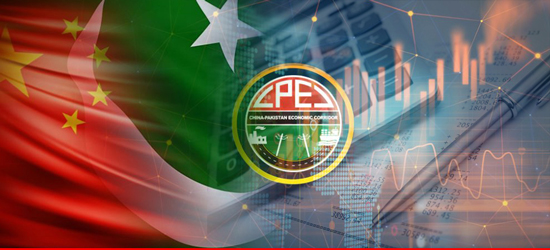Malik Muhammad Ashraf
American Principal Deputy Secretary of State for South Asia Alice Wells speaking at the Woodrow Wilson International Centre for Scholars in Washington on Friday launched a scathing attack on the multi-billion CPEC project claiming it was going to take a toll on Pakistan’s economy. Her argument was that it would dent the Pakistan economy at the time of repayment of debt and dividend; project relies primarily on Chinese workers and supplies rather than giving business to Pakistani companies; Chinese workers taking wages back and even if loan payment are deferred they are going to hamstring Imran’s reform agenda.
I am afraid that the remarks of the US Deputy Secretary lack economic rationale and have much to do with the global politics premised on stop China Policy of US which has also found a partner in this region like India. The opposition of both these countries to CPEC and the BRI initiative of the Chinese government is known to the entire world as they have been taking overt and covert measures to sabotage it. Now coming to the economic reasons advanced by the US diplomat it is an irrefutable reality that the Chinese component of debt accounts for only 6.1% of the total foreign debt of Pakistan which is quite insignificant in terms of having any debilitating impact on the economy. The major portion of the CPEC spend is direct Chinese investment, particularly in the infrastructure and energy production. Another thing is that the rate of interest on the loans is lesser than what the international lending agencies charge on such loans. The US conveniently overlooks the benefits that the Chinese investment in CPEC is going to generate in the long run when all the projects under the initiative come on stream. The economists are of the considered opinion that the CPEC is going to add 2-3% to the GDP of Pakistan which by any standard would be a quantum jump in the rate of growth of Pakistan.
CPEC is a nationally owned project of Pakistan with a transformational impact not only on her economic profile but also the entire region. The linkages created by it would generate tremendous amount to economic activity to the benefit of all the countries of the region with Pakistan serving as a hub of this mega economic propeller. The opposition of the US to this project actually stems from its fears that it would lead to enhancement in Chinese influence around the world. As far as the economic aspect of the BRI and CPEC is concerned there is no valid reason for hurling flak at it. Chinese initiative is based purely on economic considerations rather than political agenda as was the case in regards to the Marshall Plan of the US after the World War-II which apart of rebuilding the economies of the western countries was basically aimed at stopping the spread of Communism. The Chinese model is based on partnership and the building of the infrastructure in the participating countries to propel their economic growth, a realistic approach towards economic development. Infrastructure is the basic ingredient of sustained economic development of any economy.
People are often heard wondering why some of the countries are more developed than others and why the countries in Asia which attained their independence just about the same time as us have gone far ahead in terms of economic prosperity. The simple and straight answer is that their secret lies in development of physical infrastructure i.e. better roads, ports, highways, airports and other elements of infrastructure like power, water resources and human capital.
It is universally recognized and established fact that no nation can leapfrog into the elite club of developed nations unless it invests in all elements of the infrastructure components, as there are no short cuts to economic progress. All modern growth models invariably rely on development of infrastructure and the resultant industrialization as imperative ingredients and catalysts for a sustained economic growth of a country. The phenomenal economic prosperity and industrial development in the Asian countries such as China, South Korea, Singapore and Malaysia during the last three decades is a ranting testimony of this modern reality. Attainment of high level growth is unimaginable without industrialization and gradual lessening of dependence on the agriculture sector.
The CPEC exactly aims at developing physical infrastructure in the participating countries and their transformation from agricultural societies to industrial entities and creating an integrated world market that brings shared benefits. While launching the BRI and CPEC the Chinese government spelled out the aims of the initiative in these words: “It is aimed at promoting orderly and free flow of economic factors, highly efficient allocation of resources and deep integration of markets, encouraging the countries along the Belt and Road Initiative to achieve economic policy coordination and carry out broader and more in-depth regional cooperation of higher standards and jointly creating an open, inclusive and balanced regional economic cooperation architecture that benefits all”. No wonder that even some of the US allies like UK have also evinced interest in joining the CPEC.
The CPEC has already been through its first phase of infrastructure development and energy production in Pakistan and is now entering the second phase of industrialization and social development. It has already provided employment opportunities to 75000 Pakistanis. Eventually it is likely to create one million jobs for them. The infrastructure built under CPEC and the connectivity that it would create among the countries of the region will bring infinite benefits to the entire region on a perennial basis. That is actually the possibility which haunts the US. China is a trusted friend of Pakistan and has played a very significant role in the economic development of the country and in strengthening her defence. As against this, the US has always betrayed her (Pakistan) in spite of being an ally.









